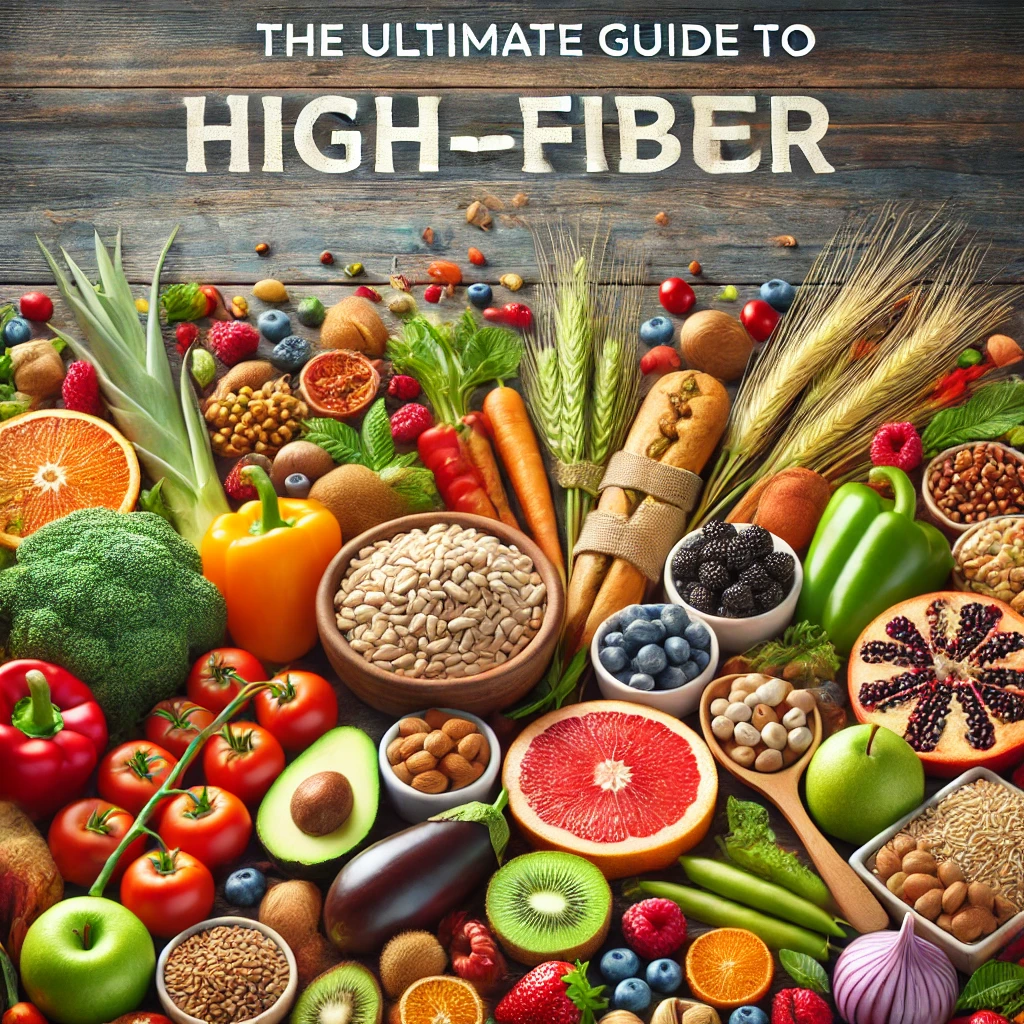- What Is Dietary Fiber and Why Does It Matter?
- Types of Fiber: Soluble vs. Insoluble
- Top 50 High-Fiber Foods (Categorized)
- Health Benefits of a High-Fiber Diet
- How Much Fiber Do You Need Daily?
- High-Fiber Meal Plans (7-Day Guide)
- Recipes: Breakfast, Lunch, Dinner, Snacks
- Fiber Supplements: Pros and Cons
- Common Mistakes When Increasing Fiber Intake
- Fiber for Specific Diets (Keto, Vegan, Gluten-Free)
- Fiber and Gut Health: The Microbiome Connection
- FAQs About High-Fiber Foods
- Conclusion
1. What Is Dietary Fiber and Why Does It Matter?
Dietary fiber, often called “roughage,” is a type of carbohydrate found in plant-based foods that the human body cannot digest. Unlike fats, proteins, or other carbs, fiber passes through the digestive system mostly intact, playing a critical role in maintaining gut health, regulating blood sugar, and lowering cholesterol.
- Key Stats:
- Only 5% of Americans meet the recommended daily fiber intake (25–38 grams).
- High-fiber diets reduce the risk of heart disease, diabetes, and colorectal cancer.
2. Types of Fiber: Soluble vs. Insoluble
Soluble Fiber
- Function: Dissolves in water to form a gel-like substance.
- Benefits: Lowers cholesterol, stabilizes blood sugar.
- Sources: Oats, apples, beans, chia seeds.
Insoluble Fiber
- Function: Adds bulk to stool, aids digestion.
- Benefits: Prevents constipation, supports bowel health.
- Sources: Whole wheat, nuts, cauliflower, potatoes.
3. Top 50 High-Fiber Foods (Categorized)
Fruits
- Raspberries (8g fiber per cup)
- Avocado (10g per cup)
- Pears (5.5g per medium fruit)
Vegetables
- Artichokes (10g per medium)
- Broccoli (5g per cup)
- Sweet Potatoes (4g per medium)
Legumes
- Lentils (15g per cup)
- Black Beans (15g per cup)
- Chickpeas (12g per cup)
Grains
- Quinoa (5g per cup)
- Oats (4g per cup)
- Barley (6g per cup)
Nuts & Seeds
- Chia Seeds (10g per ounce)
- Almonds (3.5g per ounce)
- Flaxseeds (8g per tablespoon)
(Expand to 50 foods with serving sizes and fiber content.)
4. Health Benefits of a High-Fiber Diet
- Digestive Health: Prevents constipation, reduces IBS symptoms.
- Heart Health: Lowers LDL cholesterol by binding to bile acids.
- Weight Management: Promotes satiety, reduces overeating.
- Blood Sugar Control: Slows glucose absorption (key for diabetics).
- Cancer Prevention: Linked to reduced colorectal cancer risk.
5. How Much Fiber Do You Need Daily?
- Men: 30–38 grams/day.
- Women: 21–25 grams/day.
- Children: Age + 5 grams (e.g., a 10-year-old needs 15g).
Example Day:
- Breakfast: Oatmeal with berries (8g).
- Snack: Apple with almond butter (4g).
- Lunch: Quinoa salad with chickpeas (12g).
- Dinner: Lentil soup with broccoli (10g).
- Total: 34g.
6. High-Fiber Meal Plans (7-Day Guide)
Day 1 (Vegetarian)
- Breakfast: Chia pudding with raspberries (12g).
- Lunch: Whole-grain wrap with hummus and veggies (10g).
- Dinner: Black bean chili with avocado (15g).
Day 2 (Vegan)
- Breakfast: Smoothie with spinach, flaxseeds, and banana (8g).
- Lunch: Lentil and kale salad (14g).
- Dinner: Stir-fried tofu with broccoli and quinoa (12g).
(Continue for 7 days, including gluten-free and keto options.)
7. Recipes
High-Fiber Breakfast: Avocado & Egg Toast
- Ingredients:
- Whole-grain bread (3g fiber).
- Avocado (5g fiber).
- Poached egg.
- Fiber per serving: 8g.
Snack: Roasted Chickpeas
- Recipe: Toss chickpeas with olive oil and paprika; roast at 400°F for 25 minutes.
- Fiber per ½ cup: 6g.
8. Fiber Supplements: Pros and Cons
- Pros: Convenient for busy lifestyles, good for IBS management.
- Cons: Lack of nutrients compared to whole foods, may cause bloating.
- Top Supplements: Psyllium husk, inulin, methylcellulose.
9. Common Mistakes
- Too Much Too Soon: Rapidly increasing fiber causes bloating. Fix: Add 5g daily increments.
- Low Water Intake: Fiber needs water to move through the gut. Fix: Drink 8+ cups daily.
10. Fiber for Specific Diets
- Keto: Focus on low-carb, high-fiber veggies (e.g., broccoli, avocados).
- Vegan: Legumes, seeds, and whole grains.
- Gluten-Free: Quinoa, buckwheat, and chia seeds.
11. Fiber and Gut Health
- Prebiotics: Certain fibers (e.g., inulin) feed beneficial gut bacteria.
- Microbiome Impact: A diverse gut flora reduces inflammation and boosts immunity.
12. FAQs
Q: Can fiber cause gas?
A: Yes—start slowly and pair with probiotics like yogurt.
Q: Are fiber bars healthy?
A: Often high in sugar; opt for whole foods instead.
13. Conclusion
A high-fiber diet is a cornerstone of long-term health. By incorporating diverse fiber-rich foods, you can improve digestion, protect your heart, and fuel your body sustainably.

